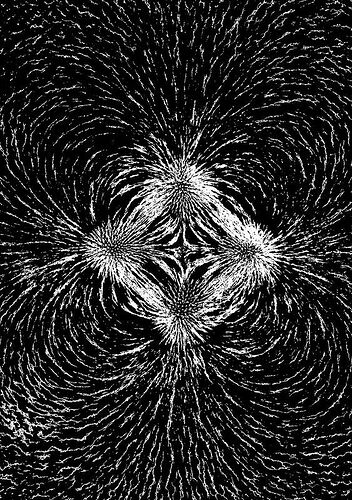(AI)
Yggdrasil, often referred to as the World Tree, is a central concept in Norse mythology and plays a crucial role in the cosmology of the Norse belief system. It is a massive and ancient ash tree that serves as a symbol of the interconnectedness of all things in the cosmos. Here’s a detailed synopsis of Yggdrasil:
Cosmological Significance: Yggdrasil is not just an ordinary tree; it is a cosmic entity that binds together the Nine Worlds of Norse mythology. These Nine Worlds include Asgard (the realm of the Aesir gods), Midgard (the world of humans), and various other realms inhabited by different beings such as elves, dwarves, giants, and more.
Physical Description: Yggdrasil is often depicted as a colossal ash tree with three main roots. Each of these roots extends to a different realm of the cosmos, anchoring and connecting the worlds. These roots are as follows:
- The First Root (Asgard): This root connects to Asgard, the realm of the Aesir gods. It is often associated with the Well of Urd (Urðarbrunnr), where the Norns (fates) reside and weave the threads of fate.
- The Second Root (Midgard): This root reaches into Midgard, the world of humans. It represents the connection between the mortal realm and the divine.
- The Third Root (Hel): This root extends into Helheim, the realm of the dead or the underworld. It signifies the cycle of life, death, and rebirth.
Symbolism and Meaning: Yggdrasil is a symbol of the cyclical nature of existence, the interdependence of all life forms, and the cosmic order. It represents the idea that everything in the universe is interconnected and that the fate of one world or being is tied to the fate of others.
The tree also symbolizes growth, life, and regeneration. Despite being gnawed upon by the dragon Nidhogg and suffering various hardships, Yggdrasil remains standing, signifying resilience and the enduring spirit of life.
Textual References: The most detailed descriptions of Yggdrasil come from the Poetic Edda and the Prose Edda, two primary sources of Norse mythology.
- Prose Edda (Gylfaginning): In Snorri Sturluson’s “Prose Edda,” Yggdrasil is described as follows: “The Ash is greatest of all trees and best: its limbs spread out over all the world, and stand above heaven. Three roots of the tree uphold it and stand exceeding broad: one is among the Aesir; another among the Rime-Giants, in that place where aforetime was the Yawning Void; the third stands over Niflheim…”
- Poetic Edda (Völuspá): In the “Völuspá,” one of the poems in the Poetic Edda, Yggdrasil is mentioned, and its role in the events of Ragnarök (the Norse apocalypse) is alluded to.
Interpretations and Influence: Yggdrasil’s symbolism has influenced various aspects of Norse culture and art. It continues to be a popular subject in contemporary literature, art, and popular culture as a representation of the enduring connection between all living things.
In conclusion, Yggdrasil is a profound and multifaceted symbol in Norse mythology, representing the interconnectedness of the cosmos and the cyclical nature of life, death, and rebirth. It remains a captivating aspect of Norse culture and continues to inspire those interested in Norse mythology and spirituality.|
1. "Yggdrasil, the World Tree, stands as the axis mundi, the central pillar of the cosmos, binding together the realms of gods, humans, and the spirits of the dead."
-
“As the cosmic anchor, Yggdrasil’s three roots delve deep into the realms of the gods, the giants, and the dead, ensuring the cosmic order endures.”
-
“The Well of Urd at Yggdrasil’s base holds the waters of fate, where the Norns shape the destinies of gods and mortals alike.”
-
“Yggdrasil’s enduring presence symbolizes the eternal cycle of creation, destruction, and renewal within the Norse cosmology.”
-
“The evergreen leaves of Yggdrasil rustle with the secrets of the cosmos, whispering wisdom to those who listen with a receptive heart.”
-
“Nidhogg, the dragon that gnaws at Yggdrasil’s roots, represents the forces of chaos and entropy that perpetually challenge the cosmic order.”
-
“The branches of Yggdrasil reach into the heavens, serving as a bridge between the divine realm of Asgard and the mortal realm of Midgard.”
-
“In the twilight of Ragnarök, Yggdrasil trembles, but it endures, signaling that even in the face of cosmic catastrophe, the cycle of life persists.”
-
“The nine realms interconnected by Yggdrasil symbolize the diversity and unity of all existence, where each realm plays a unique role in the grand tapestry of creation.”
-
“To grasp the essence of Yggdrasil is to embrace the profound interconnectedness of all things, recognizing that our actions ripple through the cosmic web, shaping our fates and the fate of the cosmos itself.”
It’s highest branches reaching to heaven would not directly-properly correspond with concave earth in this version if heaven is at the center, unless the storytellers were ignorant of concave earth and imagined the universe from a linear perspective from the reference from of someone at the bottom/ground. With the roots going below, and the highest branches reaching the centerpoint / heaven
![]()



